Saunter like Sophia (Loren, that is)
I find it hard to imagine what the Italian coast must have been like in the 1960s. Before the hordes of tourists, bumper to bumper traffic on the Amalfi Coast, and the insufferable Instagram influencers nearly pushing one another off cliffs to get the right shot. I caught a glimpse of a less-traveled coastline when we went to the South for a week in May to cover the newly reopened Hotel Santavenere. I discovered my inner Sophia Loren. The one I had no idea I had inside.
I love finding places that are unusual and relatively unknown, and this trip delivered. We headed to Salerno on a Frecciarossa, Trenitalia’s high-speed rail service, cruising along at nearly 300 kilometers per hour (185 mph). We left around 8 from Tuscany and arrived, nearly 300 miles away, in Naples’ southern neighbor Salerno by 11:30—not bad for a morning’s work. Salerno is very walkable with a nice seafront. We rented a car, explored the town on foot, had lunch at a local place with an array of fish caught that morning displayed on ice, and drove a few miles up the infamous Amalfi Coast road for a night in Ravello. (Travelers hint: Salerno is a great base for the Amalfi Coast. There are frequent ferries that run to Portofino, Amalfi, and Sorrento that are much easier than waiting in traffic on the narrow, twisting main road in high season. It’s also very well-connected to other destinations in Italy by train.)
The ancient village of Ravello (dates from the 5th-century) is famous for being perched high on a cliff, safe from invaders, 1100 feet over the sea. We chose to stay down the hill at water’s level at the Hotel Marmorata. Luckily, they gave us a room with a window looking directly over the coastline and the pounding waves—one of my favorite sounds—which we could hear all night.
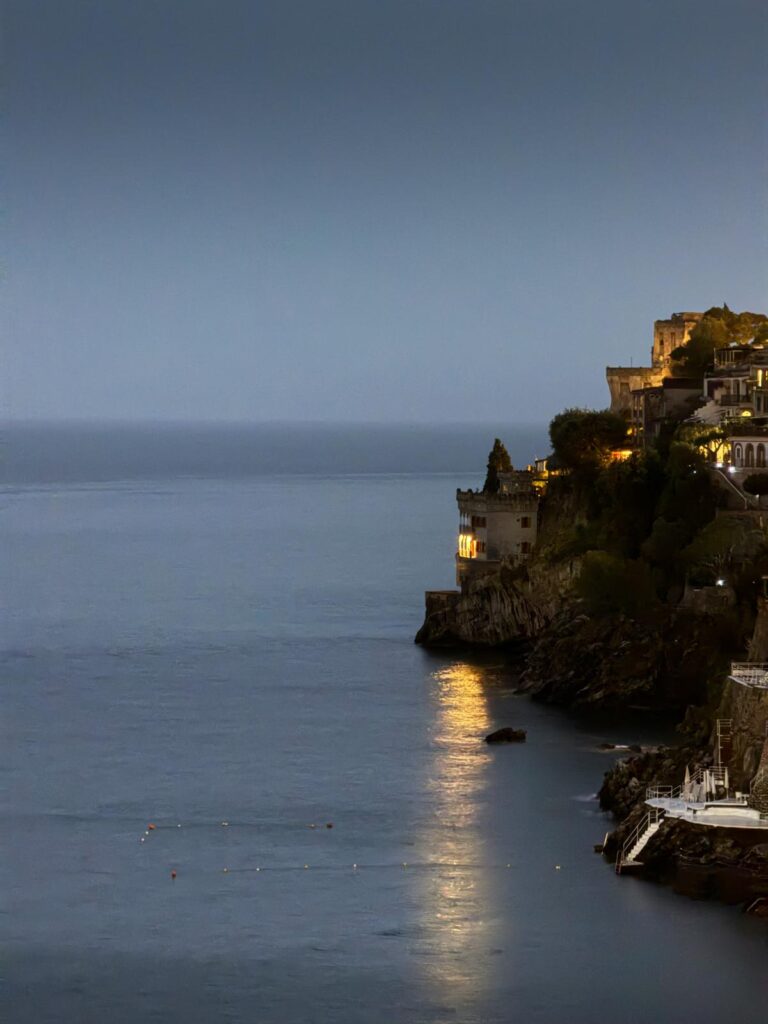
There was even a ladder from the pool area right into the sea, but it was too cool and rainy that night to use it.
En route to my assignment we visited the ancient site Paestum. This was a major ancient Greek city on the coast of the Tyrrhenian Sea. Three major temples are in remarkable shape for having been built from 550 to 450 BC. The site is evocative, with the remains of houses and civic buildings, paved roads, city walls and amphitheater, and it wasn’t at all crowded. Often overshadowed by the Roman ruins at Pompeii, Paestum is well worth a visit.
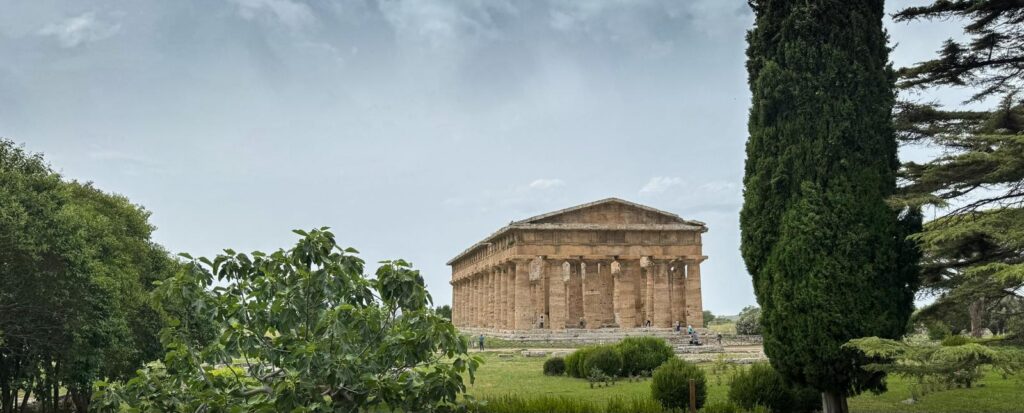
I am lucky to be able to go on the occasional boondoggle to cover a hotel for a travel publication, and this assignment is my favorite to date. Hotel Santavenere was built in the 1950s by an industrialist from Piedmont, Count Stefano Rivetti di Val Cervo. He bought a huge chunk of the Tyrrhenian Coast below the perched, ancient village of Maratea and built a hotel with a mere 34 rooms. The place was recently taken over by one of Italy’s highest-end hotel groups, Egnazia Ospitalita Italiana, who did a complete remodel. It just entered The Leading Hotels of the World group.
I’m not a big mid-century modern person, but this place is gorgeous. The gardens are sprawling and have been well-tended since the resort’s creation seventy years ago (the hotel will provide picnic lunches for those who’d like to eat under the umbrella pines). There are several paths which wind down the steep hill between where the hotel is sited and the Tyrrhenian Sea to a rock outcropping and a small beach arranged with sun loungers. A ladder provides easy access to the sea, which was blissful to swim in. Private dinners can be arranged seaside.
The topography of this area of Italy is beautiful. It’s where the Apennine Mountains, which extend the length of Italy, meet the sea, so plenty of cliffs, ravines, and apparently, caves.

The hotel has so few rooms that the lobby and restaurant take over one whole floor, wrapped by a terrace with stunning views. One of the details I loved the most are the beautiful pink and green tiles, custom made for the place in the 1950s.
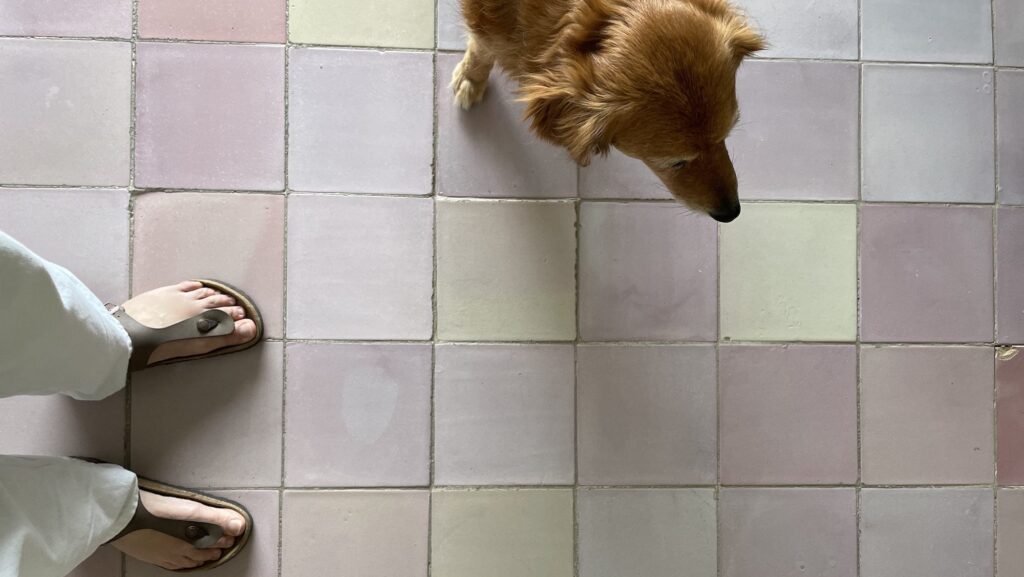
Walking through the lobby, on the way to dinner on the terrace overlooking the sea, I did find my walk changing into a saunter when I could so easily imagine the heyday of Italy’s dolce vita years. Sophia would have been perfectly at home. But probably not in my Birkenstocks…see above.
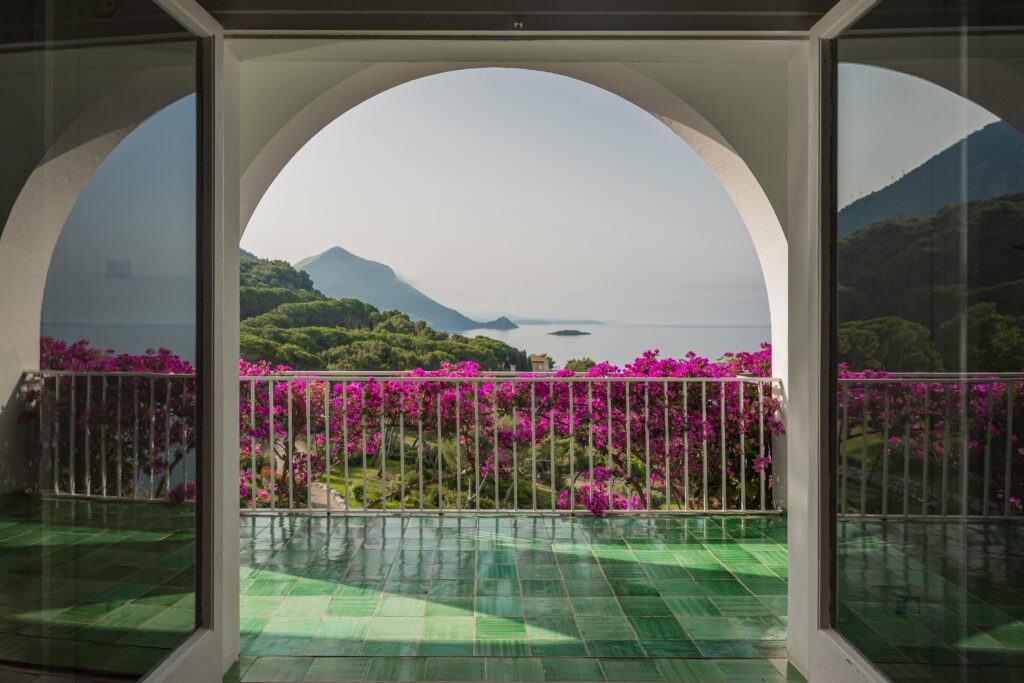
On a mountain top towering over the hotel is one of the largest Christ the Redeemer statues in the world (the biggest being in Rio) that stands 70 feet tall. The road up to the statue was as noteworthy as the destination.
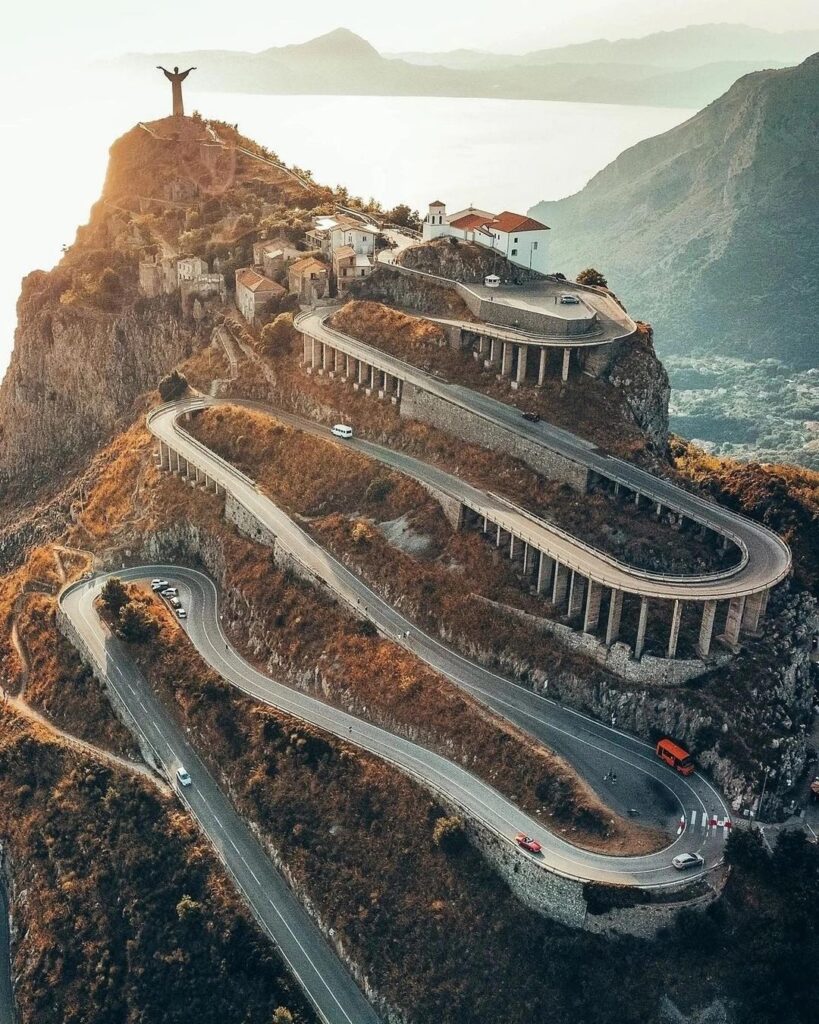
One of the interesting things about reviewing a hotel is that the hotel provides rooms, food, and extras like massages and local tours—but you have to be very well-behaved and there’s no anonymity. We visited the statue, the church at the summit, and the village of Matarea with two guides provided by the hotel and here is where the story of the Count began to show some cracks, although we could only push so hard. According to the hotel the Count was a beneficent guy who came South to help the local population by building wool factories, textiles being his family business in Piedmont, and happened to buy up a huge chunk of coastline. Apparently, this generosity was also helped by huge postwar grants from the Italian government—and when the subsidies ended the factories closed. He commissioned the Christ the Redeemer statue and wanted it to be the tallest in Italy. Near the statue he also “restored” an ancient church, Basilica di San Biagio (built in 1324 on a site used since 732) by gutting, modernizing, and plastering over all the art. It’s now one of the saddest churches I’ve ever been in.
The village of Maratea, five minutes from the hotel, is small and charming with 44 churches, attesting to how dangerous life was for fishermen.
If the names Paestum, the Tyrrhenian Coast, and Maratea don’t ring loud bells in many of your ears it is a good thing. We were driving along roads just as beautiful, and “thrilling” to navigate as the Amalfi Coast but were nearly the only car on the road. Everywhere we went was largely crowd-free.
Living in Italy and traveling widely, I am torn when asked about the best way to visit. Trends I’m reading about, like Bologna being touted as the new Florence, whether Rome or Venice should be avoided, or as I’ve done above, Paestum vs. Pompeii, or this piece of coastline over Amalfi, are not easy discussions. The OGs of travel are flooded with visitors for excellent reasons—they really do represent an apex—and if there’s only one chance to see Italy, should be on the list. (Hopefully not in July and August, when the heat and crowds are making the experience nearly out of the range of human tolerance, no matter how fabulous the backdrops.) However, beyond the top few must-see places, Italy is so richly blessed with scenery, architecture, culture, and food that there are many less-trafficked treasures to discover, where it may just be you and the ghost of a young Sophia Loren. And the two of us will endeavour to share these gems when we are lucky enough to encounter them.
My complete hotel review here.
la dolce vita






